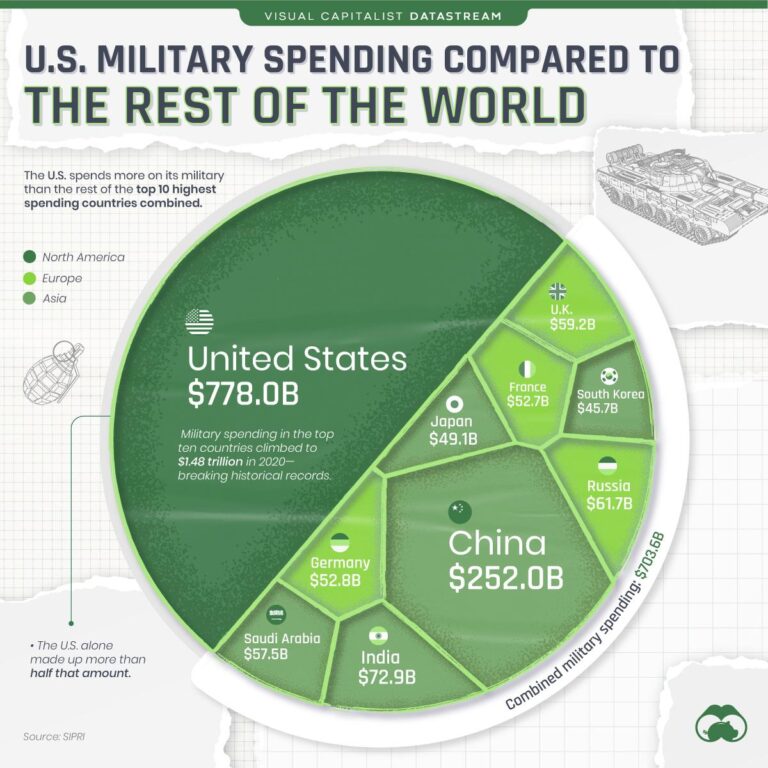The United States has issued a firm demand for Australia to increase its defence spending by an additional $40 billion annually, urging Canberra to implement the boost as soon as possible. This call for a significant expansion in military investment underscores rising strategic tensions in the Indo-Pacific region and reflects Washington’s push for its allies to share a greater burden in regional security. The Australian government now faces mounting pressure to respond to its closest ally’s expectations, raising questions about the future shape of the country’s defence policy and budget priorities.
US urges Australia to accelerate defence budget increase amid regional security concerns
The United States has intensified pressure on Australia to significantly boost its defence expenditure, urging an immediate annual increase of $40 billion to counter growing security challenges in the Indo-Pacific region. US officials emphasize that this rapid augmentation is critical to enhancing joint military capabilities, deterring potential adversaries, and safeguarding critical supply chains. The call aligns with Washington’s broader strategy to strengthen alliances amid rising tensions with China and North Korea, highlighting concerns over regional stability and the risks of escalating conflicts.
In response, Australian defence authorities have outlined several key priorities that such an investment would support:
- Expansion of naval and air forces to increase maritime domain awareness.
- Modernisation of cyber defence infrastructure to protect against evolving digital threats.
- Enhanced joint training programs with allied nations to improve operational coordination.
| Area of Investment | Projected Budget Allocation (Annual) |
|---|---|
| Naval Fleet Modernisation | $15 billion |
| Cybersecurity & Intelligence | $10 billion |
| Joint Military Exercises | $7 billion |
| Advanced Weaponry Procurement | $8 billion |
Analysis of strategic implications for Australia’s military capabilities and alliance commitments
The US’s call for Australia to increase defence spending by an additional $40 billion annually signals a significant shift in strategic expectations, with far-reaching consequences for Canberra’s military posture. Such an abrupt budget surge would necessitate rapid scaling of procurement programs, accelerated force modernization, and potentially expanding the Australian Defence Force’s operational scope. This aggressive timeline places pressure on Australia’s defence industry and workforce, raising concerns about capacity and cost-efficiency. Furthermore, increased spending would enable the acquisition of cutting-edge technologies, enhanced cyber warfare capabilities, and expanded maritime surveillance, all critical to countering growing regional threats.
From an alliance perspective, meeting this demand would reinforce Australia’s standing as a committed partner in the US-led security architecture in the Indo-Pacific. It underscores Canberra’s role not only as a recipient of American security guarantees but also as a proactive contributor to joint deterrence strategies. However, this expectation also highlights growing dependency risks and places Australia deeper within the geopolitical crosshairs of major powers such as China. Key strategic implications include:
- Enhanced interoperability with US forces through joint exercises and shared platforms
- Greater burden-sharing in regional conflict contingencies
- Potential politicization of defence policy in response to alliance demands
- Heightened domestic debate over defence priorities versus social spending
| Aspect | Current | Post-Increase | Impact |
|---|---|---|---|
| Annual Defence Budget | ~$44B | ~$84B | Rapid expansion, procurement surge |
| Force Modernization Pace | Moderate | Accelerated modernization | Faster capability upgrades, integration challenges |
| Defence Industry Capacity | Limited by current workforce and infrastructure | Stressed by demand spike | Need for rapid workforce expansion, risk of cost overruns |
| Technological Capabilities | Developing, with focus on conventional arms | Advanced cyber & maritime systems | Enhanced deterrence, improved situational awareness |
| Operational Scope | Primarily regional defense & peacekeeping | Expanded to joint regional contingencies | Increased strategic influence, higher operational tempo |
Experts recommend prioritizing modernization and joint training initiatives to maximize defence investment impact
Defence experts advocate a strategic overhaul where modernization is paired closely with enhanced joint training exercises involving Australia’s military branches alongside key allies. This integrated approach is seen as critical to ensuring that increased defence funds translate into tangible improvements in operational readiness and technological edge. Modernizing platforms, such as naval vessels and air combat systems, without simultaneous training and interoperability upgrades risks leaving expensive equipment underutilized or incompatible with allied forces.
To streamline defense capabilities, experts suggest focusing on key areas:
- Interoperability enhancement through combined exercises and unified protocols.
- Investment in emerging technologies such as cyber defence, unmanned systems, and AI-assisted intelligence.
- Regular scenario-based training that reflects current geopolitical tensions.
| Priority Area | Proposed Action | Expected Outcome |
|---|---|---|
| Platform Modernization | Replace aging fleets with advanced technology | Improved mission capability |
| Joint Training | Conduct annual multilateral exercises | Enhanced force coordination |
| Cyber Defence | Expand cyber warfare units | Stronger digital threat resilience |
Wrapping Up
As tensions in the Indo-Pacific region continue to mount, the United States’ call for Australia to increase its defence spending by $40 billion annually underscores the deepening strategic partnership between the two allies. Canberra faces mounting pressure to bolster its military capabilities to meet shared security challenges, even as domestic debates over budget priorities persist. How Australia responds in the coming months will be closely watched by both regional partners and rivals, shaping the future dynamics of defence and diplomacy in the Asia-Pacific.




